One of the first vocoder machine using telephone-circuitry.
Category Archives: Electro-Acoustic
A BRIEF HISTORY OF OPTICAL SYNTHESIS
INTRODUCTION
The technology of synthesizing sound from light is a
curious combination of research from the realms of mathematics,
physics, electronics and communications theory which found realization
in the industries of motion picture films, music, surveillance
technology and finally digital communications. As such, it’s history is
an interesting cross section of 20th century history, reaching from the
euphoria of the late 19th Century and early 20th Century inventors (who
often struggled between “scientific” and “supernatural” explainations
of their work) through the paradigm-smashing experiments of the Soviet
avant-garde in the 1920’s and 1930’s to the cynical clash of ideologies
of the Post-war years and finally to the dawn of the digital era in the
1970’s.
This history has its fair share of eccentric and fascinating characters, such as Lev Theremin, Arseny Abraamov and Daphne Oram–the
first woman to create and run a sound studio, as well as the first
woman to “design and build an entirely new sound recording medium” (Jo
Hutton in Organized Sound).
There is quite a bit of work left to do, particularly in recognizing
and translating the legacies of the Russian avant-garde artists such as
Boris Yankovsky, Evgeny Scholpo, Nikolai Voinov and the forementioned Abraamov,
whose works are largely unknown outside the former Soviet Union. A
forthcoming article on “Russian Graphical Sound” for the Computer Music
Journal by Andrei Smirnov could be one of the biggest English-language
breakthroughs in this area.
Quite clearly, the connection with filmmaking is very close.
Optical sound technology was developed first solely for recording
soundtracks for early “speakies”, and every one of the Russian
innovators used their graphical sound techniques to provide music
scores for the kino. But the connection with the “Visual Music”
movement in cinema is also very close, with perhaps the works of Norman McLaren
providing the strongest bridge. But the “direct cinema” techniques of
many filmmakers from the 1920’s and 1930’s on through the 1960’s and
1970’s show more than a casual relationship with the techniques of
direct optical sound synthesis. The works of Oskar Fischinger, Len Lye, Stan Brakhage, John Whitney, Hy Hirsch, Harry Smith, Jordan Belson, Larry Cuba and many others all reflect an ongoing lineage of this “visual music” tradition. (The “Kinetica” screening programs, available from the iotaCenter of Los Angeles, provide the most comprehensive overview of this fascinating film history, and the Visual Music website gives an excellent synopsis and timeline as well.)
My hope is that this small survey sparks more interest in all of these
inventors, composers and artists and their incredible works, as well as
provide a historical context for the TONEWHEELS performance.
TIMELINE
1822 : French mathematician and physicist Joseph Fourier
(1768 – 1830) theorized that any complex sound can be described by a
series of simpler sinusoidal components, giving rise to modern methods
of analyzing and depicting sound waves. (Source: Wikipedia, Livio Zucca)
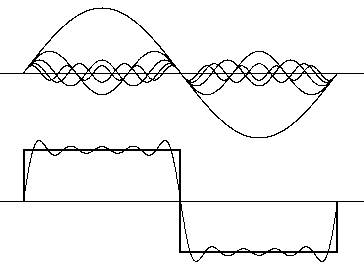
Fourier Harmonics
1860’s : German physicist Hermann Ludwig Ferdinand von Helmholtz (1821-1894) used physical objects (“Helmholtz resonators“)
to demonstrate that air cavities have sonic resonance. This further
helped scientists (and later on, electronic musicians) to describe
sound as a physical and visual phenomenon. (Sources: Wikipedia, Max Planck Institute, physics.kenyon.edu)
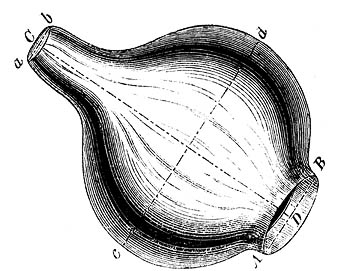
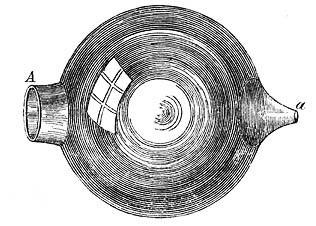
Helmholtz Resonators
1862 : Rudolph Koenig (1832-1901)
developed the manometric flame apparatus, which was used into the first
decade of the twentieth century to examine the wave-shapes of sounds.
The heart of the apparatus is the manometric flame capsule. Sound
enters the capsule via a funnel and a length of rubber hose, and
impinges on a rubber membrane placed between the two halves of the
capsule. Illuminating gas enters at the bottom of the shaft and burns
in a small flame. The oscillations of the membrane modulate the gas
supply, and the height of the gas flame varies accordingly. The
oscillating gas flame is viewed in the rotating mirror, which supplies
the necessary time base to make the waveshape visible. (Sources: physics.kenyon.edu, Wikipedia, Max Planck Institute)
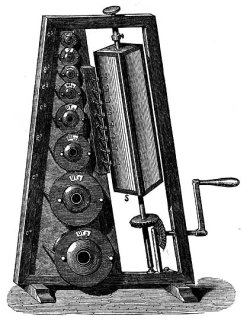
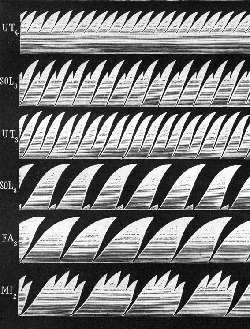
Koenig’s Manometer and the waveshape images made using the device
1907 : French-born, London-based Eugene Lauste
(1857-1935) – who had worked at Edison’s lab between 1886 and 1892 –
was awarded the first patent for sound-on-film technology, involving
the transformation of sound into light waves that are photographically
recorded direct onto celluloid. (Sources: Wikipedia)
1916 : The Optophonic Piano was created by the Russian Futurist painter Vladimir Baranoff Rossiné
(1888-1944). The Optophonic Piano generated sounds and projected
revolving patterns onto a wall or ceiling by directing a bright light
through a series revolving painted glass disks (painted by Rossiné),
filters, mirrors and lenses. The keyboard controlled the combination of
the various filters and disks. The variations in opacity of the painted
disk and filters were picked up by a photo-electric cell controlling
the pitch of a single oscillator. The instrument produced a continuous
varying tone which–accompanied by the rotating kaleidascopic
projections–was used by Vladimir Rossiné at exhibitions and public
events. (Sources: Keyboard Museum, Historie du synthe)
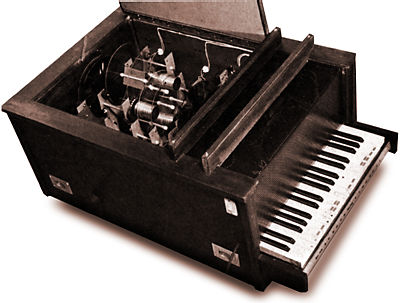
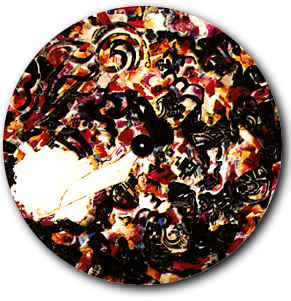
Rossiné’s Optophonic Piano and one painted disk
1919 : American inventor Lee De Forest
(1873-1961) was awarded several patents that would lead to the first
sound-on-film technology with commercial application. In De Forest’s
system, the sound track was photographically recorded on to the side of
the strip of motion picture film to create a composite, or “married,”
print. If proper synchronization of sound and picture was achieved in
recording, it could be absolutely counted on in playback. (Sources: Wikipedia)
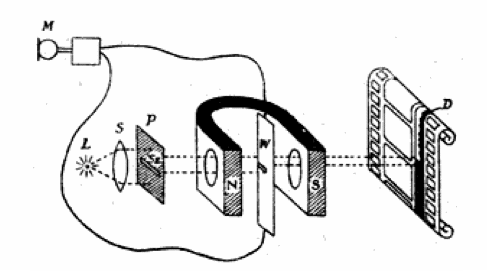
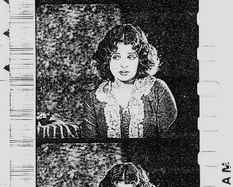
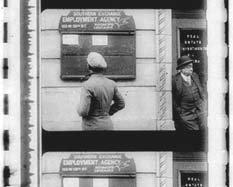
Producing optical soundtracks and two examples of sound-on-film
1921 : The Photokinema sound-on-disc system was developed by Orlando Kellum, and was employed to add synchronized sound sequences to D. W. Griffith’s failed silent film “Dream Street“.
In sound-on-disc technology from the era, a phonograph turntable is
connected by a mechanical interlock to a specially modified film
projector, allowing for synchronization. The sound discs themselves
were 16-inch, optically printed phonographic records, such as used in
the Vitaphone. While this system failed to win wide support in the film
industry, it did pave the way for sound-on-disc music instruments, such
as the Lichttonorgel and the ANS. (Sources: Wikipedia, Wikipedia)
1927 : The cellulophone is invented by the French engineer Pierre Toulon aided by Krugg Bass, in France. The Cellulophone (“Cellule Photo-électrique“)
was an electro-optical tone generator based instrument resembling an
electronic organ. The machine had two eight octave keyboards and a foot
pedal board. The sound was generated by rotating discs in which a ring
of equidistant slits were cut (54 slits for the lowest note), different
shaped masks were used for different timbres. The disks masked a light
beam that flashed through the slits and on to a photoelectric cell, the
speed of the rotating disk determining the frequency of the output
signal, provided by a vacuum tube oscillator. (Sources: Keyboard Museum)
1930 : Soviet artist Arseny Abraamov produced a series of motion picture soundtracks. He created these by photographing a series of drawings which he called “Plan Velikikh Rabot” (Plan of Great Works) and “Kem Bit” (Who to Be). His photographed drawings were part of a larger system of sound synthesis which he called the “Welttonsystem“. (Sources: Keyboard Museum, Wikipedia, Theremin Center, Theremin Center)
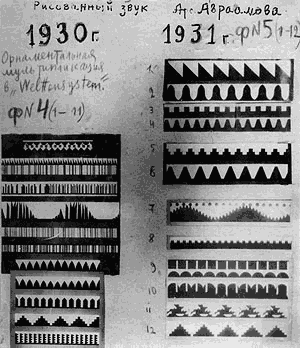
Abraamov’s sound drawings
1930 : Danish-born visual artist Thomas Wilfred
designs the Clavilux color organ, which used rotating glass disks with
hand-painted color patterns. Its inspiration came from a group of
Theosophists who wanted to demonstrate spiritual principles through the
use of light and color. Wilfred named the artform of color-music
projections “Lumia.” He stressed polymorphous, fluid streams of color
slowly metamorphosing. He established an Art Institute of Light in New
York, and toured giving Lumia concerts in the United States and Europe
(at the famous Art Deco exhibition in Paris). He also built “lumia
boxes”, self-contained units that looked rather like television sets,
which could play for days or months without repeating the same imagery.
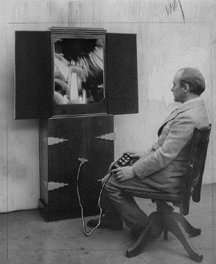
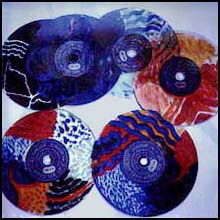
Thomas Wilfred with his Clavilux Junior and several hand-painted disks
Although this is one of many examples from the “Visual Music”
tradition, rather than a sound-producing instrument itself, the
significance of the spinning disks in relation to sound techniques is
significant. (Sources: Artists On Line, “The Dream of Color Music, and the Machines That Made It Possible“ by William Moritz, Visual Music)
1930 : The Variophone was developed by Evgeny Scholpo
in Leningrad in 1930 at Lenfilm Studio Productions, together with
composer Georgy Rimsky-Korsakov. It was the most long living project:
the Scholpo laboratory existed until 1951.
The first practical result were achived in 1931. “The method of Scholpo
gives easier access to varieties of timbres. He doesn’t shoot still
images of sounds on animation stand, instead using paper disks with a
circular images of combs with appropriate shapes of cogs, rotating
synchronously with a moving filmstrip. Exclusive benefits of Variophon
are in flexible pitch control and vibrato” (Solev 1935). Scholpo
experimented with drawn sound as early as the 1920’s and created
several sound works by photographing drawings he had made to create
soundtracks. (Sources: Keyboard Museum, Wikipedia, Theremin Center, forthcoming article “Graphical Sound in Russia” by Andrei Smirnov for the Computer Music Journal)
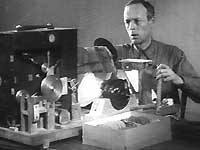
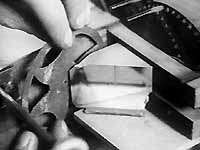
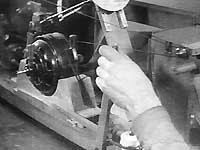
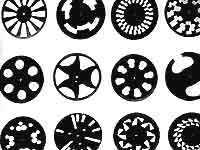
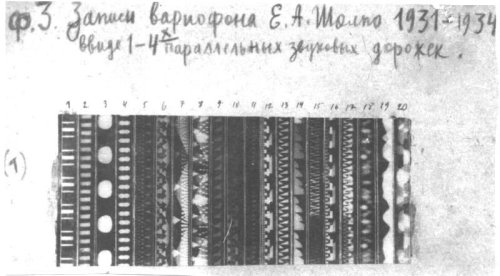
Scholpo working with the Variophone, several examples of the sound disks and a section of printed film
1930 : The book “Theory and Practice of Graphic Sound” was published in the Soviet Union, focusing on the technique of “painted sound” and including Boris Yankovsky‘s important essay “Acoustic Synthesis of Musical Colours“. (Sources: Kinozapinski)
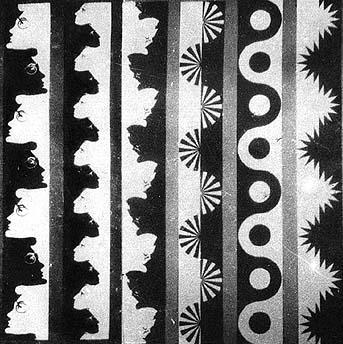
Painted soundtrack
1931 : The Saraga-Generator was developed by Wolja Saraga
at the Heinrich-Hertz Institut Für Schwingungsforschung in Berlin,
Germany. The Saraga Generator was an unusual photoelectrically
controlled vacuum tube instrument. The instrument consisted of a
photoelectric cell mounted on the white painted inside surface of a box
with a small slit cut on one face. A low voltage neon lamp was placed
at some distance from the box and the performers movements interrupting
the light beam caused variations in pitch. Envelope and timbre were
affected by manipulating a hand held switch device, the overall volume
being controlled by a foot pedal. The instrument had a tonal range of
four octaves. (Sources: Keyboard Museum)
1931 : The “Radio Organ of a Trillion Tones” was created and developed by A. Lesti and F. Sammis
in the USA. The Radio Organ used a similar technique as the Celluphone
and variants – rotating photo-electric disks interrupting a light beam
at different frequencies produced varied pitches an timbres from a
vacuum tube oscillator; the principle was improved in the “Polytone”.
(Sources: Keyboard Museum)
1932-1936 : Boris Yankovsky of the
USSR invents the Vibroexponator optical sound instrument based on the
“painted sound” techniques of Soviet film soundtrack composers.
(Sources: Theremin Center)
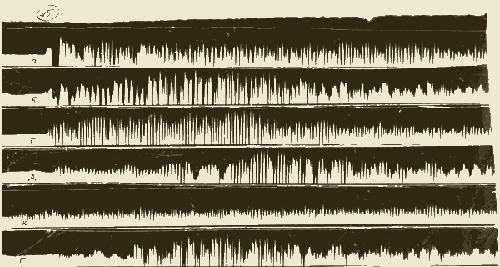
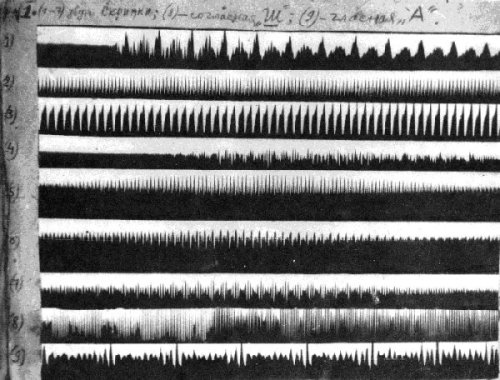
Yankovsky’s Vibroexponator soundtracks
1932-1939 : Boris Yankovsky develops his system of “syntones” and spectral mutations. (Sources: Theremin Center, Theremin Center, Theremin Center)
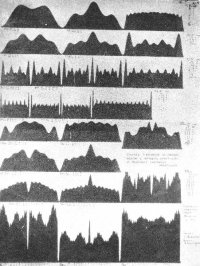
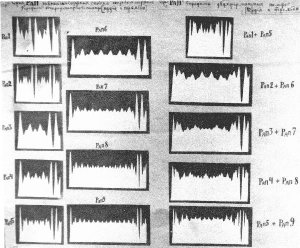
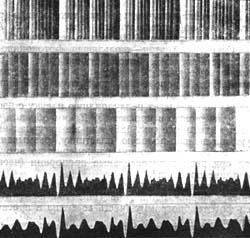
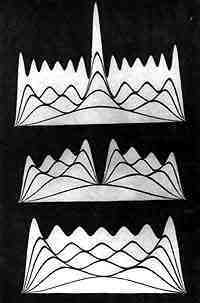
Yankovsky’s syntones and spectral mutations
1934 : A. Lesti and F. Sammis‘s
development of the Radio Organ of a Trillion Tones was christened the
‘The Polytone Organ’, this instrument was a three keyboard manual organ
using the same sound production system as the ‘Radio Organ’ – rotating
photo-electrical tone-wheel sound generation. The instrument was
completed in 1934 and was one of the first multi-timbral instruments.
(Sources: Keyboard Museum)
1934-1935 : The “Syntronic Organ” (1934)
& The “Photona” (1935) were developed. Syntronic Organ was an
electro-optical tone generator based instrument engineered by Ivan Eremeef and L. Stokowski
and was able to produce “one-hour of continuous variation” created by
an optically generated tone using films of tone-wheels. Ivan Eremeef
later created the “Photona” a 12 electro-optical tone generator based
system, developed at WCAU radio, Philadelphia, USA. (Sources: Keyboard Museum)
1936 : The Welte Light-Tone, designed by Edwin Emil Welte
(1876-1958) in Germany, was an electronic instrument using
electro-optically controlled tone generators. A glass disk was printed
with 18 different waveforms giving 3 different timbres for all the
octave registers of each single note. The glass tone wheel rotated over
a series of photoelectric cells, filtering a light beam that contolled
the sound timbre and pitch. (Sources: Keyboard Museum, Wikipedia)
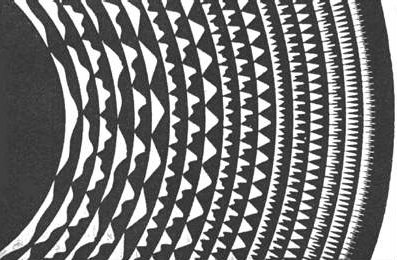
Welte Light-tone disk
1936 : F. Sammis invented the
“singing Keyboard”, a precursor of modern samplers, the instrument
played electro-optical recordings of audio waves stored on strips of
35mm film which were triggered and pitched when the player pressed a
key. More recent instruments such as the Mellotron and Chamberlin use a
similar technology of triggered and pitched magnetic tape recordings.
(Sources: Keyboard Museum)
1936 : Nikolai Voinov invents the
“Nivotone” in the Soviet Union. This instrument optically read strips
of paper hand-cut by Voinov as sound information. (Sources: Theremin Center, Theremin Center)
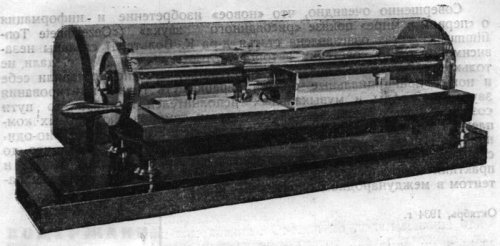
Voinov cutting paper strips, a paper soundtrack and the Nivotone
1938 : Russian engineer Evgeny Murzin
(1821-1894) invented a design for composers based on synthesizing
complex musical sounds from a limited number of pure tones; this
proposed system was to perform music without musicians or musical
instruments. The technological basis of his invention was the method of
photo-optic sound recording used in cinematography, which made it
possible to obtain a visible image of a sound wave, as well as to
realize the opposite goal – synthesizing a sound from an artificially
drawn sound wave. (Sources: Wikipedia, Theremin Center, Theremin Center)
1940’s-1960’s : Canadian filmmaker Norman McLaren (1914-1987), sometimes working with New Zealand kinetic sculptor and filmmaker Len Lye,
creates films whose sounds were created by drawing or printing various
patterns (e.g. shapes such as triangles, circles, etc.) along the
optical soundtrack area of the film. (Sources: Keyboard Museum, Wikipedia, Wikipedia, Wikipedia)
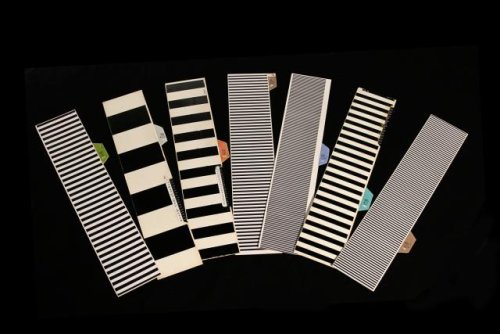
McLaren’s squarewave cards
Late 1940’s : German abstract animator Oskar Fischinger
(1900-1967) experimented with “sound scrolls”–long sheets of paper on
which he would draw sound waves and then animate. (Sources: Wikipedia, Rhythm in Motion, Visual Music)
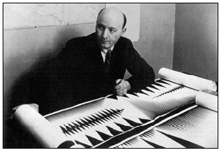
Fischinger and his “sound scrolls”
1947 : Lev Theremin (1896-1993)
develops the “Buran” light-monitoring eavesdropping system while
working as an imprisoned scientist for the KGB in the USSR. The system
worked by receiving the reflected light from a surface which could be
modulated by sound inside a room (a glass window, for example), and
converting that back to audible sound. These principles would later be
incorporated into commonly-used laser “bugging” systems. (Sources: Theremin Center, Wikipedia)
1958 : Evgeny Murzin develops the
ANS synthesizer. In this instrument, sine waves are printed onto five
glass discs. Each disc has 144 individual tracks printed onto it,
producing a total of 720 microtones (discreet pitches) available to the
user. These are arranged vertically from low frequencies at the bottom
to high frequencies at the top. The convolved light is then projected
onto the back of the synthesizer’s interface.
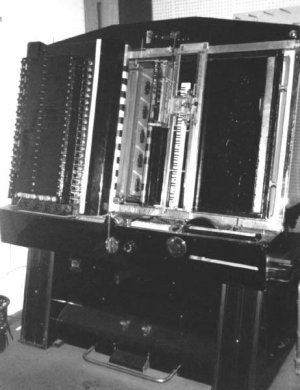
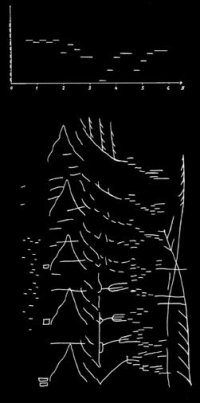
The ANS synthesizer and a graphical score
The interface consists of a glass plate covered in opaque black
“mastic” which constitutes a drawing surface upon which the user makes
marks by scratching through the mastic, and therefore allowing light to
pass through at that point. In front of the glass plate sits a vertical
bank of photocells which send signals to band-pass amplifiers, each
with dB trim switches.
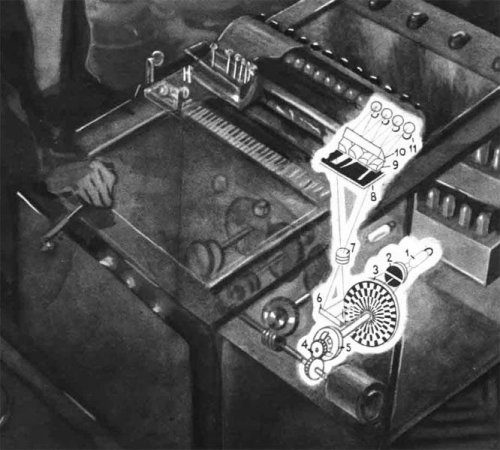
The mechanical workings of the ANS
The glass plate can then be scanned left or right in front of the
photocell bank in order to transcribe the drawing directly into
pitches. In other words, it plays what you draw. The ANS is completely
polyphonic and will generate up to all 720 of its pitches
simultaneously if required. (Sources: Wikipedia, Theremin Center, Theremin Center)
1959 : The technique of Oramics was developed by pioneering British composer and electronic musician Daphne Oram
(1925-2003) at the BBC Radiophonic Workshop, in England. It consisted
of drawing onto a set of ten sprocketed synchronised strips of 35mm
film which covered a series of photo-electric cells that in turn
generated an electrical charge to control the sound fequency, timbre,
amplitude and duration. This technique was similar to the work of
Evgeny Scholpo’s “Variophone” some years earlier in Leningrad and in
some ways to the punch-roll system of the RCA Synthesiser. The output
from the instrument was only monophonic relying on multitrack tape
recording to build up polyphonic textures.
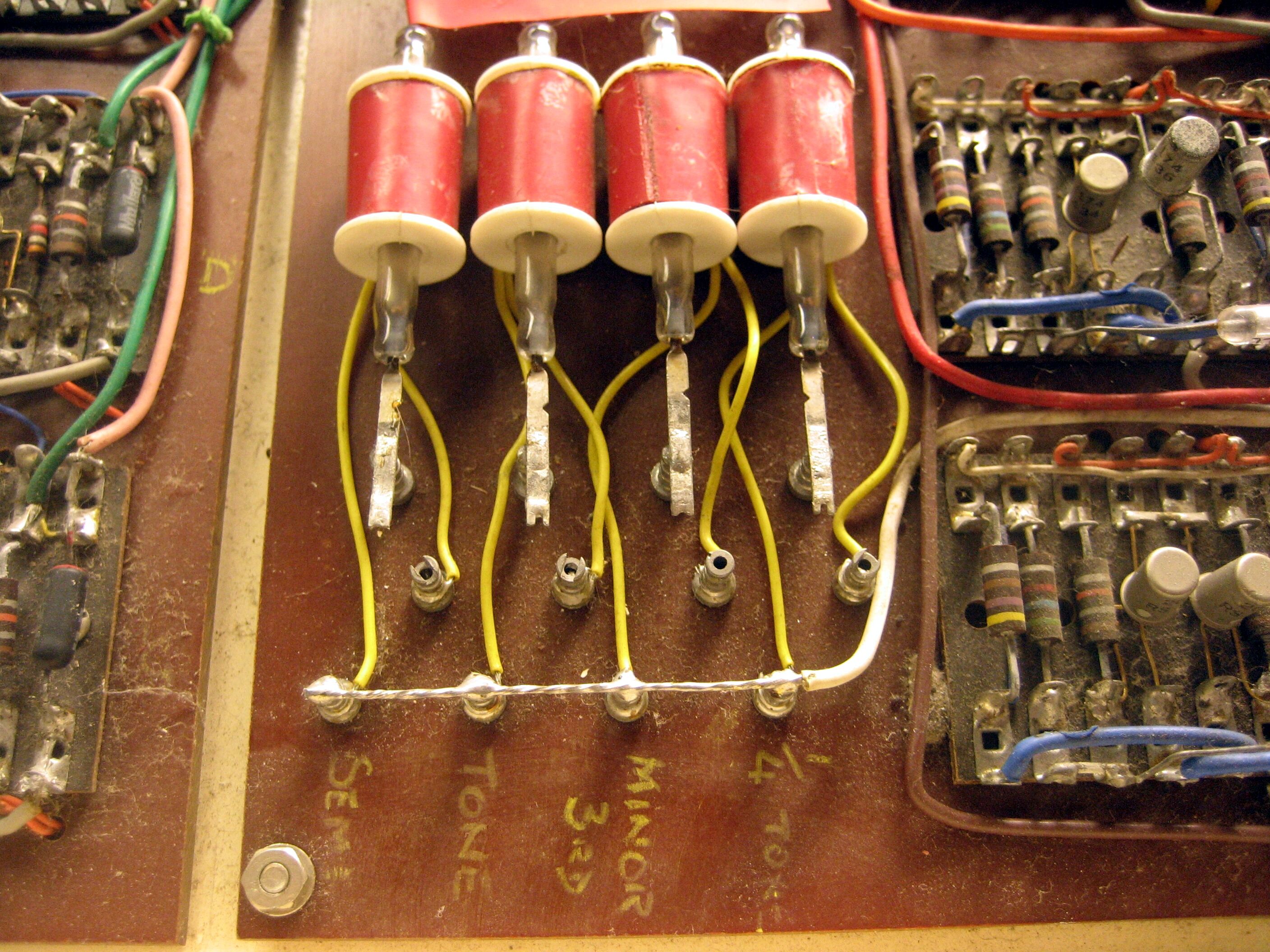
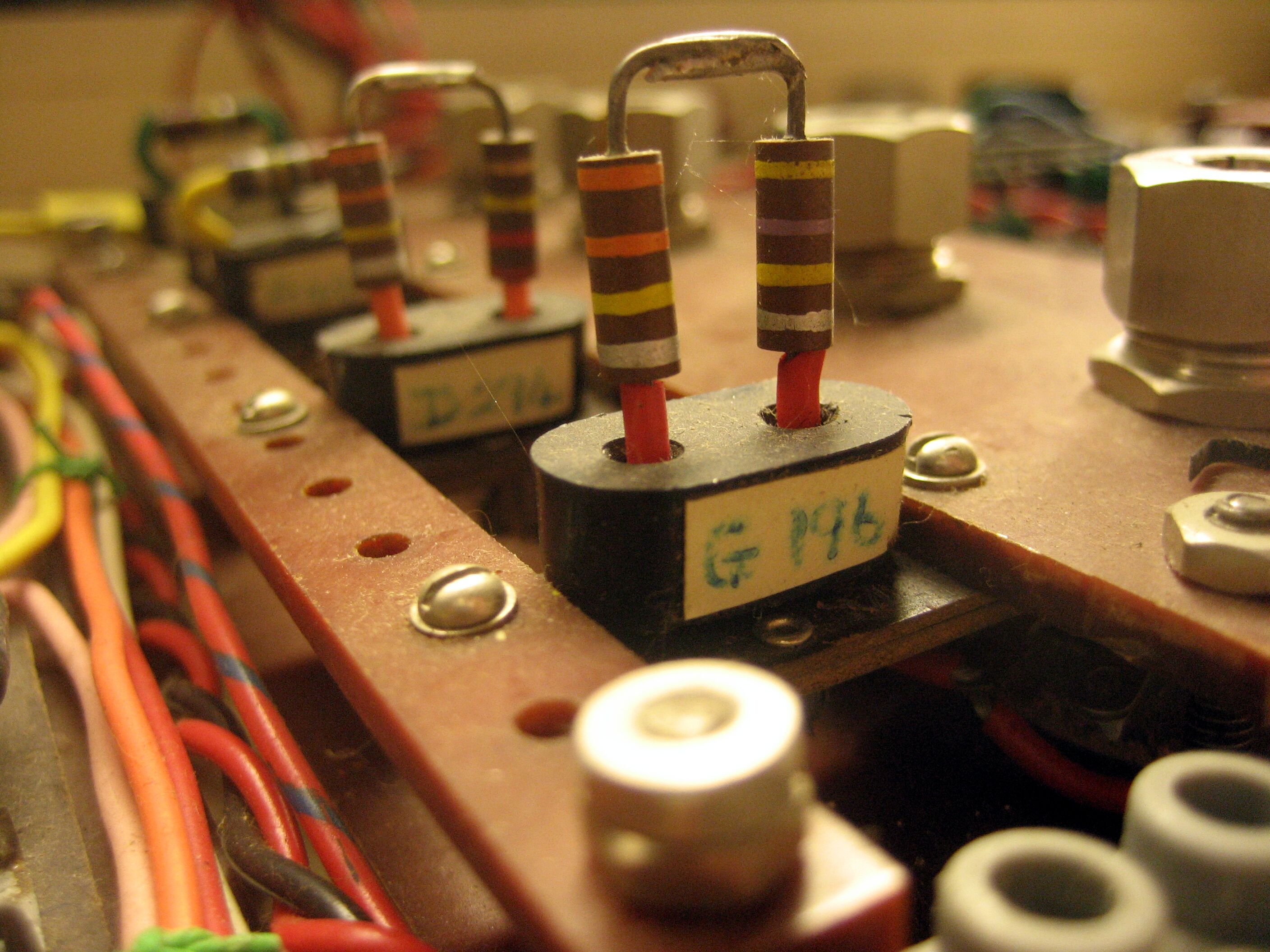
Oramics recordings by Daphne Oram
The attraction of this technique was a direct relation of a graphic
image to the audio signal and even though the system was monophonic the
flexibility of control over the nuances of sound production was
unmatched in all but the most sophisticated analogue voltage controlled
synthesisers. (Sources: Keyboard Museum, Wikipedia)
1971 : The Optigan was released by the Optigan Corporation,
a subsidiary of toy manufacturer Mattel. The unusual feature of the
Optigan was its method of sound synthesis; the Optigan optically read
graphic representations of waveforms from a series of 12″ celluloid LP
sized discs, hence the name Optigan – ‘Optical-Organ’. The Optigan read
the discs by passing a light beam through the transparent discs, the
beam was interrupted or reduced by the shape of the printed waveform
and picked up by a photoelectric cell causing a variable voltage which
was in turn amplified and passed to the speakers.
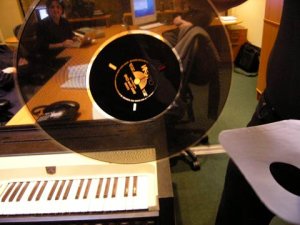
Optigan disk with organ in the background
The Optigan was essentially an optical sampler, the disks contained 57
loops of sounds which were recordings of real instruments, 37 of the
loops were reserved for keyboard sounds ( with individual loops for
each key) the other 20 loops being sound effects, rhythms etc. The
celluloid discs were sold as a collection for Optigan owners and were
mainly sustained organ sounds, as the continually spinning loops had no
beginning or end it was impossible to create an attack or decay.
(Sources: Keyboard Museum, Wikipedia)
1970’s : Fiber-optic communication
developed. This is a method of transmitting information from one place
to another by sending light through an optical fiber. The light forms
an electromagnetic carrier wave that is modulated to carry information.
This system revolutionized the telecommunications industry and played a
major role in the advent of the Information Age. The information age
finally catches up with the artistic and musical use of modulated
light, and light-based signal systems finally go digital. (Sources: Wikipedia)
ACKNOWLEDGEMENTS
I am deeply indebted to the research of Andrei Smirnov of the Theremin Center, Moscow. Without Smirnov’s careful work in preserving and archiving many important documents
from the 1920’s to the 1960’s, most of the information on the
pioneering Soviet electronic music instruments, film sound and writings
(as well as several surviving instruments) would be lost forever.
Smirnov offers several extremely interesting lectures on the “Nonlinear History”
of Soviet electronic music instruments, Lev Theremin and the
interrelationship of espionage techniques and art. I can highly
recommend these lectures as well as his workshops to academies, universities, symposiums or festivals.
I would also like to thank the owners of the Keyboard Museum website for their exhaustive collection and documentation of vintage electronic music instruments, especially those invented before the 1960’s.
I consider their page, along with Andrei Smirnov’s, to be one of the
best resources for starting an investigation into the history of
optical synthesis technology.
This history was compiled for the TONEWHEELS project, as part of a residency at the Tesla media arts laboratory, in Berlin, Germany over the months of Oct-Dec 2007, and at STEIM during the last two weeks of February 2008. I am grateful for their support of this project as well.
Derek Holzer
Berlin, October 2007
CONTACT
derek ___AT THE DOMAIN___ umatic.nl
-reference :http://www.umatic.nl/tonewheels_historical.html
What You Talkin’ Bout, Willits? Max for Live!
We interrupt our usual broadcasting to bring you a special preview of the unreleased Max for Live!
Ableton gave Christopher Willits the green light to show off some of
the features from the not-yet-released Max for Live. If you’re a
digital-signal-processing dork like us, you know this represents an
exciting leap forward.
Tune in once a month as Christopher shows us some of the ways he
produces his own music, as well as the many cool things you can do with
recording software. According to Christopher, “I simply want to excite
people’s imaginations and creative processes so they can more easily
create the sounds and music and art they love.”